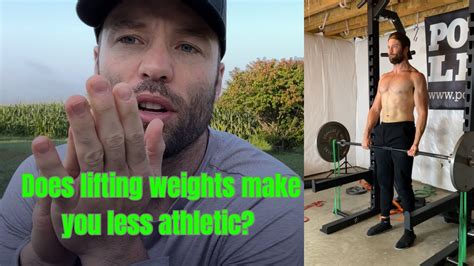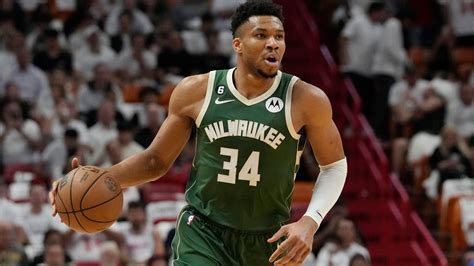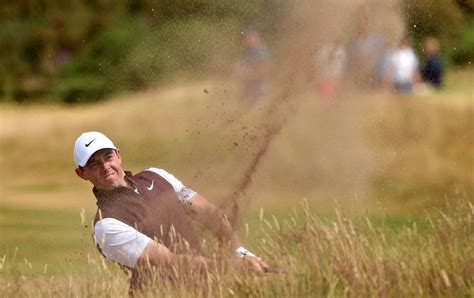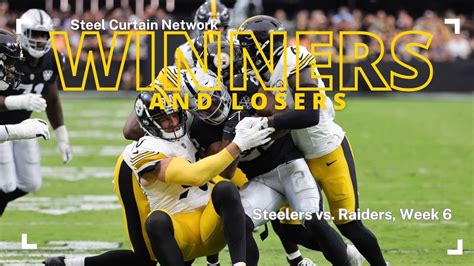
Weightlifting might hinder, not help, a basketball player’s shooting ability, according to former Boston Celtics star Kevin McHale, who recounted Larry Bird’s deliberate avoidance of weight training to preserve his shooting touch. McHale suggests that today’s emphasis on strength and conditioning could be detrimental to developing the finesse and feel crucial for elite shooting.
Kevin McHale, a Hall of Famer known for his own polished offensive game, recently shared his insights on why his former teammate, Larry Bird, deliberately avoided intensive weight training. McHale believes that the modern NBA’s heavy emphasis on weightlifting and physical conditioning could inadvertently be harming players’ shooting abilities. He argues that focusing solely on building muscle mass and strength might come at the expense of the delicate touch and feel required for consistent and accurate shooting.
“Larry never lifted weights, ever,” McHale stated emphatically. “He would shoot every day. He goes, ‘I don’t want to lift weights. That’ll screw up my shot.'” This philosophy, McHale explained, stemmed from Bird’s understanding of the subtle mechanics involved in shooting a basketball. Bird feared that adding unnecessary muscle mass would alter his shooting motion, disrupt his timing, and ultimately diminish his accuracy.
McHale elaborated on the difference between strength and basketball-specific skill. “Shooting is a feel,” he said. “The more strength you get, sometimes it’s harder to shoot the ball.” He believes that the current trend of pushing players to bulk up in the weight room might be counterproductive for some, especially those whose game relies heavily on finesse and touch.
While acknowledging the importance of overall fitness and injury prevention, McHale cautioned against prioritizing strength training to the detriment of skill development. He suggested that a more nuanced approach, one that balances physical conditioning with focused shooting practice, might be more beneficial for optimizing a player’s offensive capabilities. “I’m not saying don’t be in shape,” McHale clarified. “But I think sometimes guys overdo it.”
This perspective challenges the conventional wisdom in modern basketball, where strength and athleticism are often seen as paramount. McHale’s comments offer a valuable counterpoint, highlighting the importance of feel, finesse, and dedicated shooting practice in developing elite-level shooters. His observations raise important questions about the optimal balance between physical conditioning and skill development in the modern game.
The context of Bird’s era further illuminates McHale’s point. In the 1980s, the NBA was characterized by a more deliberate and fundamentally sound style of play. While athleticism was still important, skill and basketball IQ were highly valued. Players like Bird, Magic Johnson, and Michael Jordan possessed exceptional court awareness and the ability to make precise passes and shots.
Bird’s success serves as a compelling argument for McHale’s perspective. Despite not being the most physically imposing player, Bird was one of the greatest shooters in NBA history. His exceptional hand-eye coordination, unwavering dedication to practice, and innate understanding of the game allowed him to consistently make difficult shots under pressure.
However, it is important to consider the evolution of the NBA since Bird’s era. The game has become significantly more athletic and fast-paced. Players are now expected to be able to run, jump, and defend at a high level. Strength and conditioning are seen as essential for withstanding the physical demands of the modern game and preventing injuries.
Many modern coaches and trainers believe that strength training can actually improve shooting ability by providing a more stable base and allowing players to generate more power. They argue that increased strength can lead to greater shooting range and the ability to shoot effectively even when fatigued.
Furthermore, advancements in training techniques and nutrition have allowed players to build strength without sacrificing flexibility and mobility. Modern weightlifting programs often incorporate exercises designed to improve core stability, balance, and coordination, which are all important for shooting a basketball.
The debate over the role of weight training in shooting ability is likely to continue. There is no one-size-fits-all answer, and the optimal approach may vary depending on the individual player’s body type, skill set, and playing style. However, McHale’s comments serve as a reminder that strength is not the only factor that determines a player’s shooting success. Feel, technique, and dedicated practice are equally important.
McHale’s argument can be interpreted not as a complete dismissal of weight training, but as a call for a more balanced and individualized approach. He emphasizes the importance of understanding how strength training affects a player’s shooting mechanics and adjusting training programs accordingly. The focus should be on enhancing, not hindering, the player’s natural shooting ability.
One might consider how this applies to different positions in basketball. A center, for example, who spends a significant amount of time in the low post battling for rebounds and position, likely benefits from increased strength. A guard, however, whose game relies more on finesse and perimeter shooting, might need to prioritize shooting practice and agility training over heavy weightlifting.
Moreover, the psychological aspect of shooting should not be overlooked. Confidence and mental focus are crucial for consistent shooting performance. Overthinking one’s shooting mechanics or feeling overly stiff from excessive weightlifting can negatively impact a player’s confidence and rhythm.
McHale’s anecdote about Bird underscores the importance of self-awareness and understanding one’s own body. Bird knew what worked for him and was unwilling to compromise his shooting ability for the sake of gaining more muscle mass. This level of self-knowledge is essential for any athlete seeking to maximize their potential.
The discussion also highlights the evolving nature of sports science and training methodologies. While the benefits of strength training are well-documented, it is important to critically evaluate the potential drawbacks and adapt training programs to meet the specific needs of each athlete. A cookie-cutter approach to training can be detrimental, especially for players who rely on finesse and touch.
In conclusion, Kevin McHale’s perspective on Larry Bird’s aversion to weight training offers a valuable insight into the importance of feel, technique, and dedicated practice in developing elite-level shooting ability. While strength and conditioning are undoubtedly important aspects of modern basketball, McHale’s comments serve as a reminder that a balanced and individualized approach is crucial for optimizing a player’s offensive capabilities. The key lies in understanding how strength training affects a player’s shooting mechanics and adjusting training programs accordingly, ensuring that the focus remains on enhancing, not hindering, their natural shooting ability. The debate continues, emphasizing the need for continuous evaluation and adaptation in the ever-evolving world of sports training.
The relevance of McHale’s opinion extends beyond just shooting. It touches upon the general balance between raw physical power and refined skill in sports. There is a tendency, particularly at younger levels, to overemphasize physical attributes. Coaches might favor the bigger, stronger player even if their skills are less developed. McHale’s anecdote serves as a reminder that talent and skill can be honed to overcome physical disadvantages. He isn’t suggesting that physical training is useless, but rather that its purpose should always be to enhance and support skill, not to overwhelm it.
Furthermore, McHale’s observations connect to a broader discussion within athletic training and sports psychology regarding individualized approaches. What works for one athlete might not work for another. Genetic predispositions, playing style, and even psychological makeup can all influence the ideal training regimen. A rigid, one-size-fits-all program risks hindering the development of athletes who might thrive with a more nuanced and tailored approach. Bird’s example highlights the importance of athletes understanding their own bodies and how specific training methods affect their performance.
The emphasis on “feel” in shooting, as McHale describes it, underscores the importance of proprioception – the body’s awareness of its position and movement in space. Proprioception is crucial for fine motor skills like shooting, dribbling, and passing. Excessive weight training, if not properly integrated with skill development, could potentially disrupt proprioceptive feedback, leading to a less consistent shooting motion.
Modern basketball analytics, while heavily focused on quantifiable data like shooting percentages and efficiency ratings, often struggle to capture the intangible aspects of the game, such as “feel” and court awareness. While analytics can provide valuable insights into player performance, they should not be the sole determinant of training strategies or player evaluation. McHale’s comments remind us that there are elements of the game that are difficult to quantify but are nevertheless crucial for success.
The legacy of players like Larry Bird is not just about their statistics; it’s about their artistry and the way they approached the game. They possessed a deep understanding of basketball principles and an unwavering commitment to perfecting their skills. While the modern game has evolved, the fundamental principles of shooting, passing, and dribbling remain the same. McHale’s remarks encourage us to remember these principles and to prioritize skill development alongside physical conditioning.
Ultimately, McHale’s perspective prompts a valuable discussion about the optimal balance between physical prowess and refined skill in basketball. It challenges the prevailing emphasis on brute strength and athleticism and highlights the importance of nurturing the subtle nuances of the game. His anecdote about Larry Bird serves as a powerful reminder that exceptional skill, combined with dedication and self-awareness, can overcome physical limitations and lead to unparalleled success. The key takeaway is the necessity for individualized training approaches that prioritize the enhancement of natural talent and the development of “feel” alongside physical conditioning, ensuring that the pursuit of strength does not come at the expense of finesse and accuracy on the court.
The conversation around this also highlights the role of coaching. Coaches, particularly at the developmental levels, have a responsibility to identify and nurture individual talent, even if that talent doesn’t fit neatly into the prevailing mold of athleticism. Encouraging young players to experiment with different training methods and to listen to their bodies can help them discover what works best for them. A coach who is overly focused on physical conditioning might inadvertently stifle the development of a skilled player who thrives with a more nuanced approach. The ideal coach should be a facilitator, guiding players to discover their own strengths and weaknesses and helping them develop training regimens that optimize their individual potential.
Furthermore, the discussion raises questions about the long-term impact of intensive physical training on athletes. While strength training can undoubtedly improve performance and reduce the risk of certain injuries, it can also lead to wear and tear on the body over time. The pursuit of peak physical condition should be balanced with a focus on longevity and injury prevention. Athletes should be encouraged to prioritize recovery and to listen to their bodies, avoiding the temptation to push themselves too hard. McHale’s point about Bird avoiding weights also brings to mind the concept of “functional fitness.” Bird wasn’t weak, but his strength was derived from the basketball activities themselves.
The focus on weight training should be re-evaluated to ask if it is indeed functional to the specific sport being played, or if the exercise is just generic strength training.
Finally, the story of Larry Bird’s training philosophy is a testament to the power of self-belief and unwavering dedication. Bird was not afraid to defy conventional wisdom and to follow his own instincts. He knew what worked best for him and he was unwilling to compromise his approach. This level of self-confidence is essential for any athlete seeking to achieve greatness. McHale’s anecdote serves as an inspiration to all athletes to trust their instincts, to embrace their individuality, and to never stop striving to perfect their craft. The pursuit of excellence requires not only hard work and dedication but also a deep understanding of oneself and an unwavering belief in one’s own potential. The lesson isn’t necessarily to avoid weightlifting altogether, but to understand its potential impact on individual skills and to tailor training accordingly.
Frequently Asked Questions (FAQ)
1. Did Larry Bird completely avoid all forms of physical training?
No, the article does not suggest that Larry Bird avoided all forms of physical training. Kevin McHale specifically stated that Bird “never lifted weights, ever.” This implies that Bird focused on other forms of training, such as shooting drills, practicing his basketball skills, and maintaining a level of fitness appropriate for his position. The emphasis was on skill development and avoiding weightlifting that he believed would negatively impact his shooting touch.
2. Does Kevin McHale advocate that all basketball players should avoid weightlifting?
No, Kevin McHale doesn’t explicitly advocate that all players should avoid weightlifting. He suggests that an overemphasis on weight training, particularly to the detriment of dedicated shooting practice, can be counterproductive for players whose game relies heavily on finesse and feel. He highlights the importance of a balanced approach and individualized training programs, emphasizing that strength training should enhance, not hinder, a player’s natural shooting ability. He also acknowledged that different positions may require different training focuses.
3. How has the NBA’s approach to strength and conditioning changed since Larry Bird’s era?
The NBA has undergone a significant transformation in its approach to strength and conditioning since Larry Bird’s era. Today, there is a much greater emphasis on strength training, athleticism, and overall physical conditioning. Players are now expected to be able to run faster, jump higher, and defend more aggressively. Strength training is seen as essential for withstanding the physical demands of the modern game, preventing injuries, and maximizing performance. Advancements in training techniques and nutrition have also contributed to this shift, allowing players to build strength without necessarily sacrificing flexibility and mobility.
4. Can strength training actually improve shooting ability in some cases?
Yes, many modern coaches and trainers believe that strength training can improve shooting ability in certain circumstances. They argue that increased strength can provide a more stable base, allowing players to generate more power and shoot with greater range. Strength training can also help players maintain their shooting form even when fatigued. However, it’s crucial that strength training programs are designed to enhance basketball-specific movements and don’t compromise a player’s flexibility, coordination, or shooting mechanics.
5. What is the main takeaway from Kevin McHale’s perspective on Larry Bird’s training philosophy?
The main takeaway is the importance of balance and individualized training in basketball. McHale’s perspective highlights the significance of “feel,” technique, and dedicated shooting practice in developing elite-level shooting ability. While strength and conditioning are undoubtedly important aspects of modern basketball, McHale’s comments serve as a reminder that a balanced approach is crucial for optimizing a player’s offensive capabilities. The key lies in understanding how strength training affects a player’s shooting mechanics and adjusting training programs accordingly, ensuring that the focus remains on enhancing, not hindering, their natural shooting ability. It emphasizes listening to your body, and understanding how different training techniques affect individual performance.









